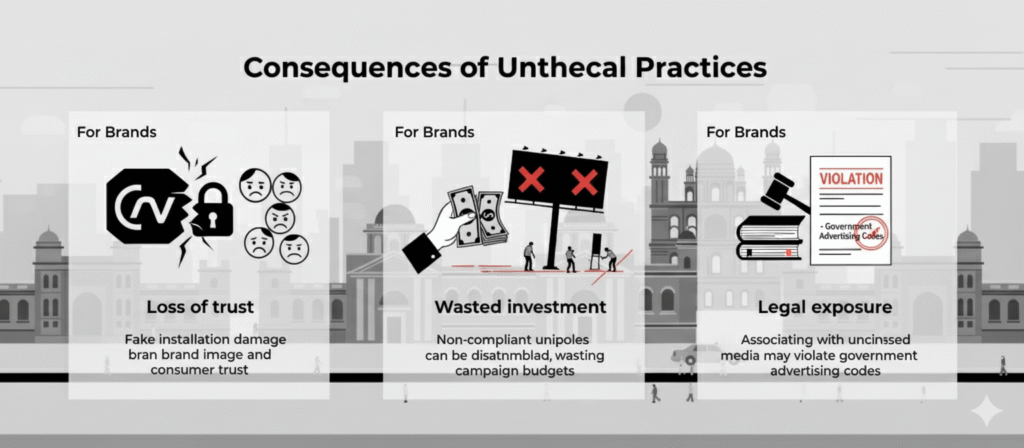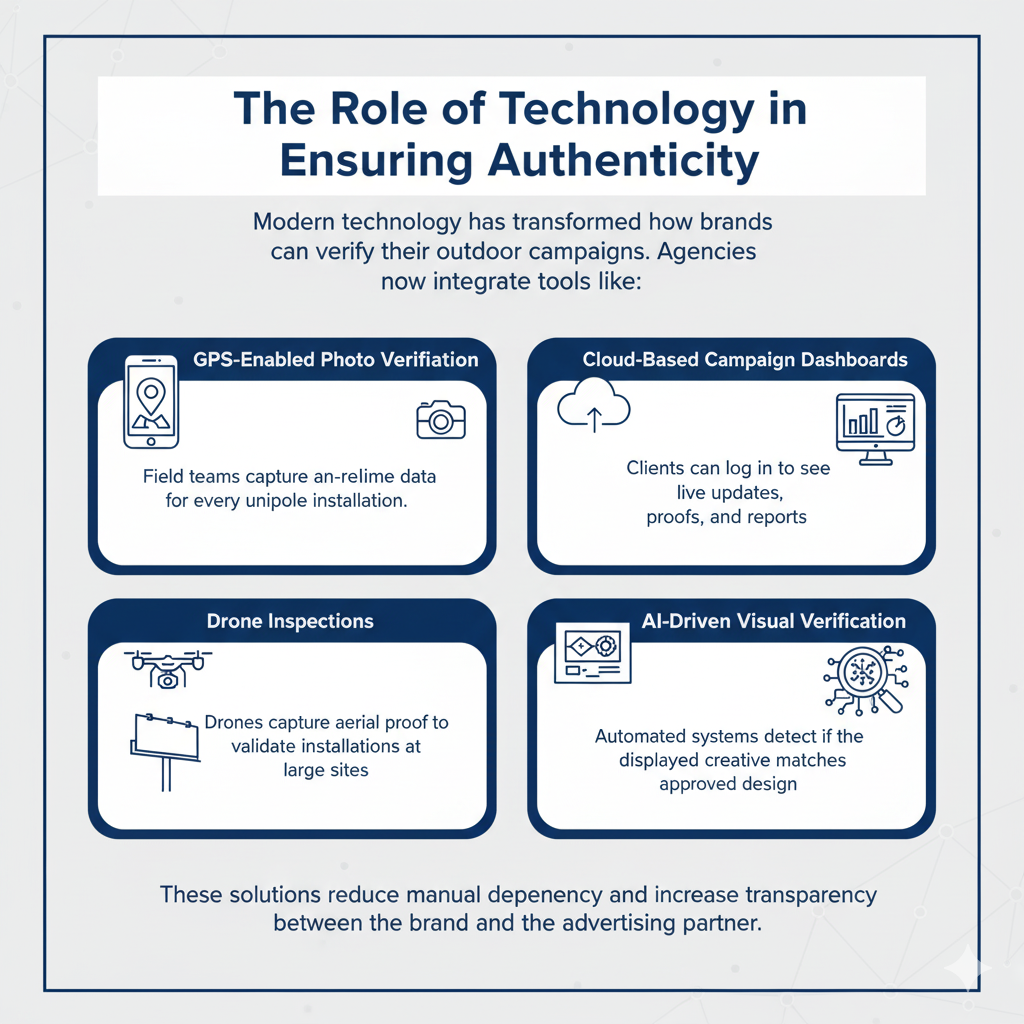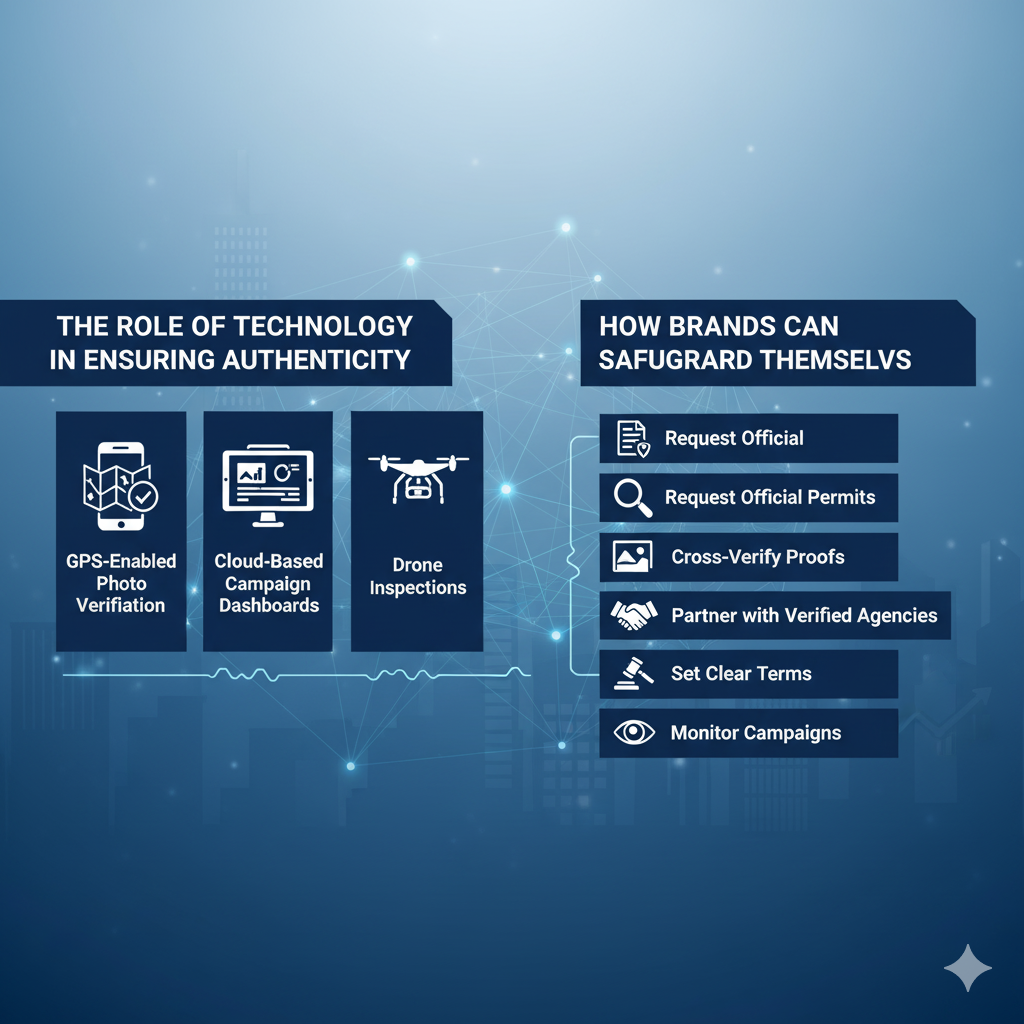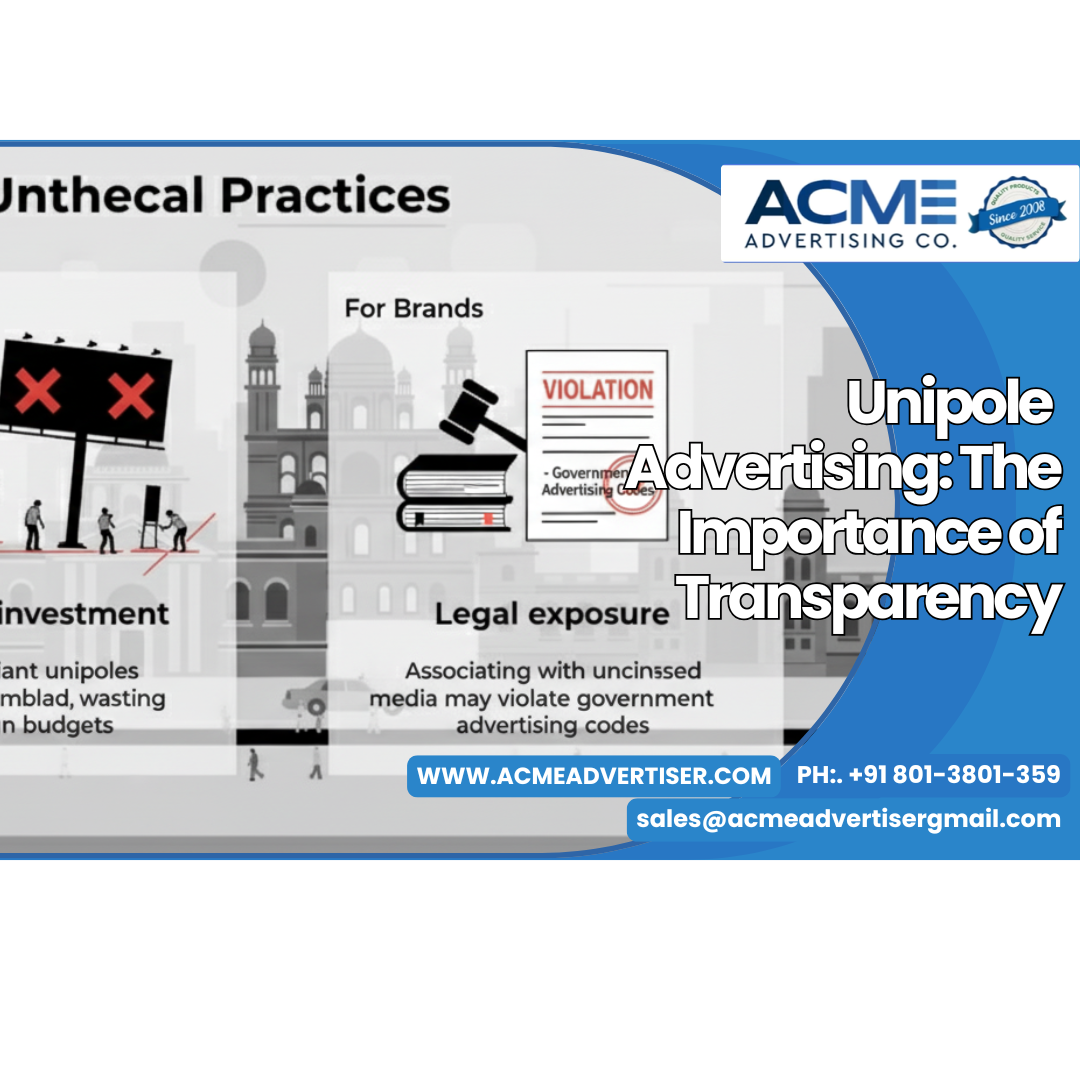
Importance of Transparency: When the Spotlight Turns to Integrity
Unipole advertising is one of the most powerful forms of outdoor branding. Large, tall, and visible from a distance, unipoles command attention and create a sense of prestige for any brand showcased on them. From highways and busy intersections to premium city locations, these structures help businesses make a statement — visible both day and night through vibrant lighting and impactful creative designs.
However, the industry’s growth has also attracted challenges — particularly those related to fake permits, counterfeit proofs, and unauthorized creative usage. These unethical practices not only damage brand trust but also impact agencies that prioritize honesty and compliance.
This article explores the issues, consequences, and solutions associated with fraudulent unipole advertising practices — and highlights why transparency and verified operations are essential for long-term success.
1. Understanding Unipole Advertising
Unipole advertising involves tall, single-column structures designed to hold large-format flex or LED displays. Their height and visibility make them ideal for:
- Promoting new launches and events
- Reinforcing brand identity
- Capturing attention in high-traffic zones
- Offering consistent visibility, both day and night
For businesses, unipoles are a symbol of visibility and credibility. A legally installed unipole, backed by permits and verified data, ensures that your brand message reaches real audiences with measurable impact.
2. The Growing Challenge: Fake Permits and Fraudulent Practices
As demand for unipole advertising grows, some vendors resort to shortcuts that compromise the integrity of outdoor media. Among the most concerning issues are:
a. Fake Permits
Fake permits refer to situations where vendors install unipoles without obtaining the required legal approvals from municipal corporations, development authorities, or local bodies.
Such unipoles might appear legitimate — but they violate city bylaws and risk being dismantled by authorities without notice.
Risks of fake permits:
- Immediate removal or demolition by municipal officers
- Financial losses for brands due to campaign disruption
- Legal liability and reputational harm
- Breach of compliance for advertising agencies
A legitimate unipole requires clearance from civic authorities, structural safety certifications, and environmental compliance. Transparent agencies ensure that all these documents are obtained and shared with clients before installation.

b. Fake Proof: Manipulated Photos or Videos
Another major concern is the manipulation of proof of display — where vendors use edited photos, videos, or old footage to claim a campaign was executed, even when it wasn’t.
This unethical practice misleads brands into believing their campaigns are live when, in reality, the installations never happened.
Common forms of fake proof include:
- Editing digital images to insert a brand’s creative on an existing billboard
- Using photos from past campaigns at different locations
- Sharing videos from unrelated sites to claim wider coverage
Such actions harm both the client’s investment and the industry’s credibility. For brands, it means wasted ad budgets and inaccurate performance reporting.
c. Unauthorized Creative Alterations
In some cases, vendors or unauthorized operators alter the brand’s approved creative before installation. This can involve:
- Changing taglines or colors
- Adding unapproved partner logos
- Adjusting visuals for easier printing
While this may seem minor, it dilutes brand identity and can even create legal complications if the original creative rights are infringed upon.
For example, a luxury brand’s visual altered with poor color accuracy or low-resolution printing affects how the public perceives the brand — damaging reputation and campaign impact.
3. Why These Issues Exist
The root causes of fraudulent practices in unipole advertising are often tied to:
- Lack of standardized monitoring across cities
- Informal operations by unverified vendors
- Pressure to deliver fast results or undercut costs
- Limited client awareness about verification procedures
As outdoor advertising expands across multiple regions, monitoring each installation manually becomes challenging. This allows room for manipulation — unless brands and agencies adopt transparent, digital-first monitoring systems.

4. Impact on Brands and Industry
The consequences of unethical practices ripple across multiple levels:
For Brands
- Loss of trust: Fake installations damage brand image and consumer trust.
- Wasted investment: Non-compliant unipoles can be dismantled, wasting campaign budgets.
- Legal exposure: Associating with unlicensed media may violate government advertising codes.
For Agencies
- Reputational damage: Agencies that unknowingly partner with non-compliant vendors face loss of credibility.
- Client dissatisfaction: Discrepancies between reported and actual visibility lead to strained relationships.
- Audit failures: Fraudulent proofs can result in discrepancies during financial audits or brand compliance checks.
For the Industry
- Reduced confidence: Genuine vendors lose business due to the mistrust created by a few.
- Stunted innovation: Time and resources get diverted from creative innovation to verification battles.
- Regulatory scrutiny: Increasing cases of non-compliance attract stricter regulations from authorities.
5. How Ethical and Transparent Agencies Build Trust
Ethical outdoor advertising agencies follow a “proof-first” philosophy, where every step of the campaign — from permissions to installations — is verified, documented, and shared transparently with clients.
Key practices include:
- Verified Permits:
All unipoles are supported by official permissions from local municipal authorities, with digital copies available for client review. - GPS-Tagged Proof of Display:
Real-time photos and videos with embedded coordinates ensure authenticity of the site. - Time-Stamped Monitoring:
Agencies use advanced field verification systems to record exact dates and times of installations. - Creative Approval Workflow:
The creative file approved by the brand is locked and sent directly for printing, ensuring no unauthorized changes are made. - Periodic Audits:
Independent audit teams cross-check site data and reports to ensure compliance and accuracy.

6. The Role of Technology in Ensuring Authenticity
Modern technology has transformed how brands can verify their outdoor campaigns.
Agencies now integrate tools like:
- GPS-Enabled Photo Verification: Field teams capture real-time data for every unipole installation.
- Cloud-Based Campaign Dashboards: Clients can log in to see live updates, proofs, and reports.
- Drone Inspections: Drones capture aerial proof to validate installations at large sites.
- AI-Driven Visual Verification: Automated systems detect if the displayed creative matches the approved design.
These solutions reduce manual dependency and increase transparency between the brand and the advertising partner.
7. Benefits of Transparent and Verified Unipole Advertising
When brands choose verified, compliant unipole advertising, they gain multiple advantages:
a. Brand Safety
Legal and approved installations ensure that your campaign runs smoothly without risk of takedown or legal action.
b. Reliable ROI Measurement
Accurate proofs help in performance tracking, enabling brands to measure visibility, reach, and engagement effectively.
c. Long-Term Relationships
Transparency builds lasting partnerships between clients and agencies, based on mutual trust and consistent delivery.
d. Enhanced Public Image
Being associated with compliant, ethical advertising practices strengthens the brand’s reputation among customers and stakeholders.
e. Sustainability
Ethically managed campaigns reduce material wastage and comply with civic guidelines, promoting environmentally responsible advertising.

8. How Brands Can Safeguard Themselves
Brands can play a proactive role in ensuring that their outdoor campaigns are authentic and compliant:
- Request Official Permits: Always ask for scanned copies of permissions before approving a site.
- Cross-Verify Proofs: Ensure that photos/videos include timestamps, GPS tags, and identifiable landmarks.
- Partner with Verified Agencies: Work with reputed partners who maintain transparent processes and strong vendor relationships.
- Set Clear Terms: Include clauses in your agreement about penalties for false proofs or unauthorized creative changes.
- Monitor Campaigns: Use third-party monitoring services or audit systems to validate installation data.
9. A Positive Future: Building a Culture of Accountability
The future of unipole advertising lies in collaboration, transparency, and data-driven operations.
As brands grow more conscious and technology evolves, agencies that prioritize ethical conduct will lead the industry.
A transparent campaign process not only assures the client of visibility but also creates a more accountable ecosystem where creativity, compliance, and credibility coexist.
By focusing on verified installations and authentic reporting, the industry can build greater trust with brands, audiences, and civic authorities alike.
Conclusion: Visibility with Integrity
Unipole advertising is about more than just visibility — it’s about credibility on display. Every time a passerby glances at a towering unipole, it reflects not just a brand’s message, but also the integrity of the agency that put it there.
Avoiding fake permits, manipulated proofs, and unauthorized creatives is not just a matter of compliance — it’s a commitment to ethical business. When advertising stands tall on truth, both brands and audiences look up with confidence.

